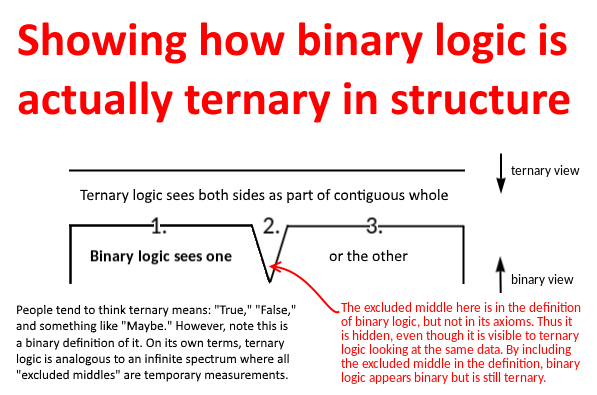This is one of those things which thoroughly surprises me, because it seems so obvious, yet it has taken me more than a couple decades to learn how to see. I've written about the idea being revealed here from a number of directions, but never before have I seen it with the clarity that I now see. The implications are significant, extending directly to Gödel's famous incompleteness proofs, and the foundations of set theory.
Here is an illustration I made to capture the idea as it presented itself to my mind this morning:

Take a moment to think about what is being described here.
As far as I know (and am eager to be shown wrong), nobody else has pointed out that binary logic is actually ternary. I believe this is because "The Law of Excluded Middle" is always seen as operating in a different domain than the two provables of "True" or "False." In fact, as the illustration shows, they operate in the same domain, but only the tiniest sharp tip of the excluded middle appears, briefly, in the definition of boolean logic -- it is assumed at a level even deeper than the axioms.
The fact that this point is not obvious at all is testimony to how we tend to apply binary logic to things without even realizing we're doing so. I need to research and see what Gödel thought about this, but it doesn't bode well that he constructed math beginning with the empty set, which is basically another way of describing the excluded middle.
What do Gödel's theorems look like when it's realized that the appropriate approach is to use full-spectrum ternary logic instead of the two poles of cold hard binary logic?